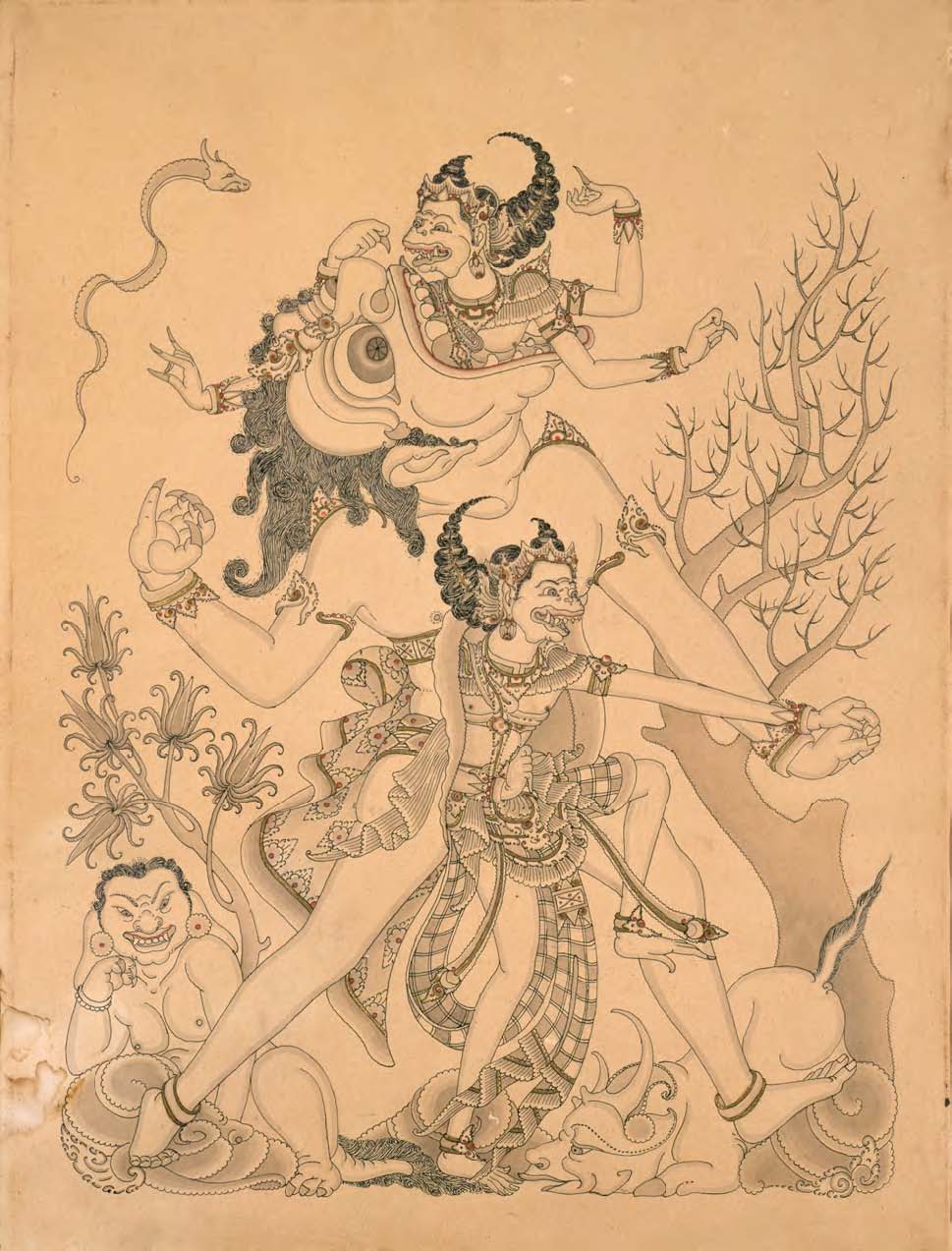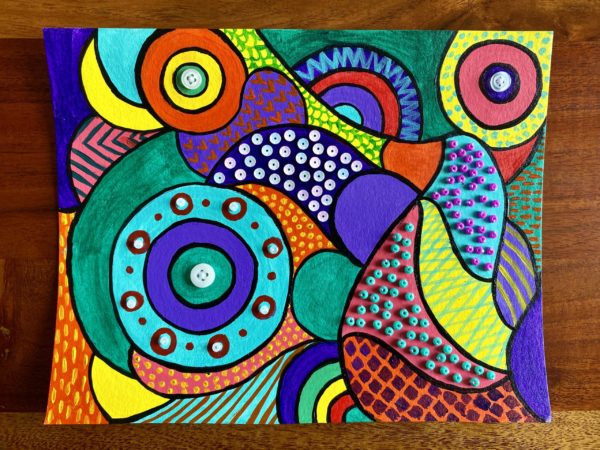Activity
Good and Evil? Dynamic Opposites in the Story of Rama
Objective: Students brainstorm the qualities of good and evil and draw conclusions about the Balinese concept of “dynamic” or balanced opposites. Then, students will relate the idea of “dynamic opposites” in the Ramayana (Story of Rama) to present-day situations by identifying a current problem, creating a visual identify for their own pair of opposing characters, and scripting a dialogue.

Hanuman’s encounters with demons on his journey to Lanka, from the Balinese version of the Ramayana
HSS 3.2.1: Describe national identities, religious beliefs, customs, and various folklore traditions.
HSS 6.5.7: Discuss important aesthetic and intellectual traditions (e.g., Sanskrit literature, including the Bhagavad Gita; medicine; metallurgy; and mathematics, including Hindu-Arabic numerals and the zero).
VPA/VA 3.3.4: Identify and describe objects of art from different parts of the world observed in visits to a museum or gallery (e.g., puppets, masks, containers).
VPA/VA 4.3.1: 3.1 Describe how art plays a role in reflecting life (e.g., in photography, quilts, architecture).
VPA/VA 5.4.2: Compare the different purposes of a specific culture for creating art.
Author: Sarah Willner, Music Integration Specialist.
Materials:
Artwork: Hanuman’s encounters with demons on his journey to Lanka, from the Balinese version of the Story of Rama; Worksheets: Brainstorm Your Characters Graphic Organizer; Dialogue Your Dilemma Graphic Organizer
Introduction
In both India and Southeast Asia a favorite character from the Indian epic the Ramayana is the monkey warrior Hanuman, the faithful companion of the hero Rama. After Rama’s wife, Sita, is kidnapped by the demon Ravana, Hanuman is instrumental in rescuing her from captivity in Lanka, Ravana’s island kingdom. As the son of the wind god, Hanuman iscapable of flying and thus is able to traverse the ocean to Lanka. Indonesian renditions of the journey differ from Indian versions. This drawing on paper (above) illustrates some of the obstacles faced by Hanuman in a Balinese retelling of the story. First Hanuman encounters the demon Wilkataksini, who guards the beach on Lanka. Hanuman is sucked into the demon’s stomach but is able to slay the demon from the inside. Then Hanuman encounters a second demon, Tatkini, who also tries to swallow him, but the monkey is able to expand his body and choke his attacker. This drawing appears to depict an amalgamation of the two episodes, showing Hanuman twice but with only one demon. Other features of the illustration may have been inspired by versions of the epic as performed by Balinese shadow puppet (wayang kulit) theater or drawn from the artist’s imagination. This type of innovation is not unusual for I Gusti Nyoman Lempad, one of the most famous Balinese artists. Over Lempad’s very long lifetime he saw tremendous changes in the development of modern art in Bali. In the 1930s, in conjunction with European artists living on the island, he helped establish the Society of Balinese Artists. Lempad worked in many mediums, but is most well known for his distinctive ink drawings. This drawing is displayed in what is believed to be its original frame.
Procedure
- Explain that people in Bali believe that they must pay attention to both good and evil to keep the world in balance. The struggle—and story—of good and evil never ends; this continual interaction is what makes the world go around. The main conflict in the Story of Rama is Rama and his cohort fighting against Ravana. But this is also a struggle for Rama’s self-knowledge of himself as an avatar of Vishnu. Rama must constantly defeat Ravana. The people in Bali view this idea that noble and evil are necessary for the universe to have balance as “dynamic opposites.”
- What are some examples of dynamic opposites? (day/night, yin/yang, ocean/mountain).
- Show students Hanuman’s encounters with demons on his journey to Lanka. Ask if they can identify what part of the story is depicted and provide evidence. Then, discuss who looks noble, who looks evil, and provide evidence based on what they see. Explain that Kumbhakarna didn’t want to fight against Rama, but chose to out of loyalty for his brother, Ravana. Ask students to share examples of a time when they got in trouble for doing something they thought was the right thing to do.
- Brainstorm the characteristics of a noble and evil character. Ask: How would a noble character in our culture look and act? How would an evil character in our culture look and act?
- Distribute Brainstorm Your Characters. Have the students—singly or in pairs—identify a problem in the world today. Their characters will be part of this struggle. Then, have students design their own pair of opposing characters based on the problem they identified.
- Have students each choose one character to develop visually for their shadow puppet, and start sketching their character to illustrate the characteristics expressed in the graphic organizer. Students can work alone or in pairs.
- Distribute Dialogue Your Dilemma and have pairs write some dialogue between their characters talking about their conflict. Write at least two lines for each character. Make sure they are talking about the problem in some way!





